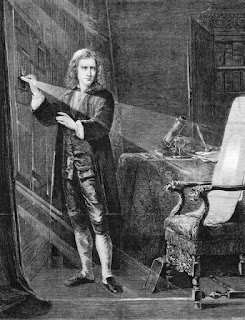300+ Years of Color Theory: Theory and Practice of Color
This book is included in a reading list on the history of Color Theory. Find the homepage for the series here.
Theory and Practice of Color: A Color Theory Based on Laws of Perception was originally published in 1975. I read the revised, second edition published in 1983.
This is the final book in this reading list spanning over 300+ years of color theory! And it’s incredibly appropriate as this book is directly linked to the very first book on the list, Newton’s Opticks.
First, let me say that this book is totally amazing! It’s the most thorough book on the subject in this entire reading list so far, and includes up-to-date scientifically correct information (for 1975). In fact, THIS is the book that started the entire reading project! When I first found this book over a year ago, it blew my mind. The ideas were so different from what I was taught about color theory and what I thought I knew. That’s when I had the idea to go back and re-read other color theory books that came before this one in order to try and better understand Gerritsen’s ideas.
And that brings us full circle all the way back to Newton. In his book Opticks, Newton describes his discovery of the visual spectrum, breaking white light into all the colors of the rainbow. Gerritsen explains how we see those colors and goes further to explain the one “true” color system based on how human beings are built to detect and perceive the visual spectrum.
Gerritsen has a masterful understanding of the long (and sometimes problematic) history of color theory going back even beyond Newton. He takes the first few chapters of his book to thoroughly review the human experience of color, how we have tried to explain and understand it, and how we’ve attempted to study and order colors through the ages.
Gerritsen’s theory is simple; humans are trichromats and perceive color through three different wavelength detectors. Short wavelength light detectors correspond to blue/violet light, medium wavelength detectors correspond to green light, and long wavelength detectors correspond to red light.
Therefore, to study color relationships the only true system to use is the one of human perception. Gerritsen’s color wheel not only represents the three primary colors of human vision (Red/Green/Blue) but also represents them alongside a color perception schema.
These little color perception illustrations represent how our trichromatic light receptors are being triggered to create the sensation of different colors.
For instance, look at the cyan blue section of the color above. The green and blue receptors are both triggered—therefore if your eye perceives short wavelengths of light (blue) and medium wavelengths (green) your brain reads this color as a bright cyan blue.
In addition to Gerritsen’s unique human perception color wheel, he further explains the differences between the Subtractive color system (AKA the Artist’s color wheel or RYB, the oldest system first recorded by J. C. LeBlon in 1720), the Additive color system (AKA the system of light or RGB), and the Partitive color system (AKA printer’s colors or CMY) with plenty of examples.
There are also excellent examples of color relationships in Gerritsen's book that have also been mentioned through countless of the other books in the reading list, such as simultaneous contrast, optical illusions of lines and colors, successive contrast, afterimages, and color constancy.
And, just as Newton tried to explain a series of other instances of colors perceived by humans in his book, Gerritsen also includes many of these same subjects like a reflection of light from different surfaces, interreflection, and interference. I haven’t checked, but I’m wondering if those mathematical equations worked out by Newton on angles of reflection and refraction have stood the test of time!
Gerritsen even includes at the very end of his book a short chapter on the Opponent theory, often referred to by earlier color theorists as the Psychological Colors. Cone opponent theory is something I've been really interested in and seems to be getting more attention recently as a process involved in illusions like colored after images, successive contrast, and simultaneous contrast.
As a companion to this book, Gerritsen has published a color workbook for students of color theory, Evolution in Color first published in 1982, which outlines the major color systems through human history. Gerritsen's comprehensive workbook includes illustrations of more than 50 historical color systems and allows you to punch out color chips to add to some of the pages.
I would recommend finding a copy of Theory and Practice of Color for any painter, quilter, designer or artist interested in learning more about color theory. Especially if you can also find a copy of Evolution in Color as a companion.
I hope you've enjoyed following along with my personal color theory reading project over the past year, I am a bit sad that I've reached the end. Theory and Practice of Color really is the last and most recent book of its kind—it includes everything scientists understand about optics and I can't see how it could be improved upon. It's been so motivating to finish one book while looking forward to reading the next one in the list, I kind of don't know what I'm going to read next!










Comments